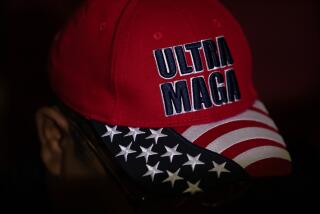THE BACKLASH BEGINS : Is The Party Over? : In the aftermath of the failed Soviet coup, the anger of the people in the street has turned against the Communist Party : The Rise of the Communists
- Share via
Until this week’s dramatic events, the Communist Party had kept a tight grip on the Soviet Union for more than seven decades.
Revolution, 1917: Bolsheviks, led by Lenin, stage coup against Kerensky government and seize power Nov. 6-7, 1917. They ban opposition groups and later shut down elected Constituent Assembly.
Civil War, 1918-21: Bolsheviks battle Cossacks, the White (anti-Soviet) army and other rebel forces. Lenin enforces war communism, confiscating grain from peasants, nationalizing banks and industries.
State Bureaucracy, 1921-28: Victorious Bolsheviks, calling themselves All-Union Communist Party, loosen restrictions on private enterprises. They set up government based on a pyramid of soviets (councils). Although nominally an elective parliamentary system, government posts and policies are, in fact, dictated by the party, which is headed by a Central Committee and Politburo.
Power Struggle, 1924-28: Triumvirate including Josef Stalin rules party and nation after Lenin’s death. They tangle with Commissar for War Leon Trotsky over party’s future and international communism. Trotsky is expelled from party and government and later killed, in 1940.
Stalin’s Dictatorship, 1929-39: Stalin begins abrupt campaign of forced agricultural collectivization and engineers ouster of government rivals. The party accelerates political controls and repression. It purges those who “deviate” from party line, shuts down churches, clamps down on trade unions and expands security police. Young people are mobilized into the Communist Union of Youth (Komsomol). Forced-labor camps are set up. Top Kremlin and party officials are executed after show trials during Great Purge, starting in 1934.
War and Expansion, 1939-53: After helping West defeat Nazis, Soviets keep troops in Germany and Eastern Europe and spread communism there. East Bloc of Communist nations, dominated by Soviets, is built. After war, Stalin and party continue repression.
Khrushchev’s Reforms, 1953-64: Stalin dies and, after a brief interim, Nikita S. Khrushchev takes over as party first secretary and later Soviet leader. He attacks Stalin’s “errors” and promises an end to party purges. He cuts back the military and emphasizes consumers over heavy industry. But party conservatives rebel and oust him.
Brezhnev and Others, 1964-1985: Leonid I. Brezhnev comes to power. He reverses many of Khrushchev’s reforms and tightens party controls on culture; dissidents are put on trial. In the 1970s and ‘80s, disillusionment with Communist leadership grows, and the economy stagnates. In 1982, Brezhnev dies and is succeeded by Yuri V. Andropov, a reformer who dies after 15 months and is replaced by Konstantin U. Chernenko, who dies in 1985.
Gorbachev and Perestroika , 1985-present: Mikhail S. Gorbachev becomes party general secretary . He embarks on revolutionary democratic reforms, called glasnost (openness), and economic reforms called perestroika . This year, he even suggests the Communist Party abandon commmunism. Party conservatives engineer a failed coup against him.
DUELING LEADERS
“To ban the CP (Communist Party) would be an error. Let’s be democrats all the way, and everybody will be on your side.”
President Mikhail S. Gorbachev
“On a lighter note, shall we now sign a decree suspending the activities of the Russian Communist Party?”
Russian leader Boris N. Yeltsin, defying Gorbachev
SIGNS THAT THE PARTY’S OVER
Among key restrictions on the Communist Party:
The new KGB chief shuts down the intelligence agency’s party cells.
The Moscow City Council orders that all party buildings in the capital be sealed and that telephone service to party and KGB buildings be cut.
Soviet Communist Party headquarters are besieged by thousands of protesters seeking documents that might link party members to the coup.
Russian Federation President Boris N. Yeltsin suspends activities of the party’s hard-line Russian branch “pending a court determination of its involvement” in the coup.
Yeltsin bans political organizations from the Soviet military, the KGB and the Interior Ministry, which covers police agencies.
Yeltsin suspends publication of six party newspapers, including Pravda, charging that they supported the coup. He also nationalizes the Novosti news agency and orders the heads of the Tass and Novosti news agencies fired.
In the Baltics, the Latvian republic bans the party. Lithuanian police occupy party headquarters, and that republic’s president demands the arrest of party leaders. Statues of Lenin are toppled in Lithuania and Estonia.
Officials in the Georgian republic urge that the party be banned and its property nationalized.
RUSSIAN FLAG REVIVED
The Russian tricolor Friday flew over the Kremlin for the first time since the 1917 Bolshevik Revolution. On orders of Russian Federation President Boris N. Yeltsin, it replaced the Soviet Russian red flag, emblazoned with Communist hammer and sickle, above his offices. Just 100 yards away, the Soviet flag continued to mark Soviet President Mikhail S. Gorbachev’s offices. White represents the White Russians (Byelorussians) Blue represents the Ukrainians Red represents greater Russia
More to Read
Sign up for Essential California
The most important California stories and recommendations in your inbox every morning.
You may occasionally receive promotional content from the Los Angeles Times.













